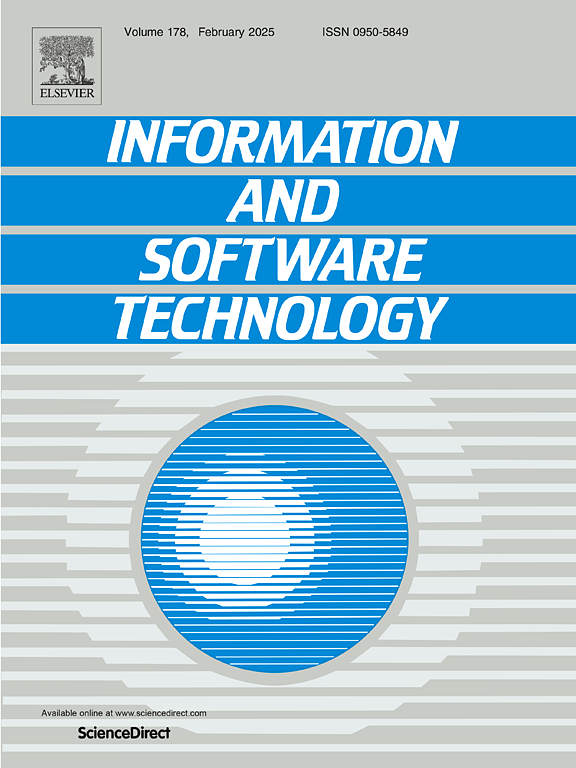Test smell: A parasitic energy consumer in software testing
IF 3.8
2区 计算机科学
Q2 COMPUTER SCIENCE, INFORMATION SYSTEMS
引用次数: 0
Abstract
Context:
Traditionally, energy efficiency research has focused on reducing energy consumption at the hardware level and, more recently, in the design and coding phases of the software development life cycle. However, software testing’s impact on energy consumption did not receive attention from the research community. Specifically, how test code design quality and test smell (e.g., sub-optimal design and bad practices in test code) impact energy consumption has not been investigated yet.
Objective:
This study aims to examine open-source software projects to analyze the association between test smell and its effects on energy consumption in software testing.
Methods:
We conducted a mixed-method empirical analysis from two perspectives; software (data mining in 12 Apache projects) and developers’ views (a survey of 62 software practitioners).
Results:
Our findings show that: (1) test smell is associated with energy consumption in software testing. Specifically, the smelly part of a test case consumes more energy compared to the non-smelly part. (2) certain test smells are more energy-hungry than others, (3) refactored test cases tend to consume less energy than their smelly counterparts, and (4) most developers (45 of the survey respondents) lack knowledge about test smells’ impact on energy consumption.
Conclusion:
Based on the results, we emphasize raising developers awareness regarding the impact of test smells on energy consumption. Additionally we present several observations that can direct future research and developments.
求助全文
约1分钟内获得全文
求助全文
来源期刊

Information and Software Technology
工程技术-计算机:软件工程
CiteScore
9.10
自引率
7.70%
发文量
164
审稿时长
9.6 weeks
期刊介绍:
Information and Software Technology is the international archival journal focusing on research and experience that contributes to the improvement of software development practices. The journal''s scope includes methods and techniques to better engineer software and manage its development. Articles submitted for review should have a clear component of software engineering or address ways to improve the engineering and management of software development. Areas covered by the journal include:
• Software management, quality and metrics,
• Software processes,
• Software architecture, modelling, specification, design and programming
• Functional and non-functional software requirements
• Software testing and verification & validation
• Empirical studies of all aspects of engineering and managing software development
Short Communications is a new section dedicated to short papers addressing new ideas, controversial opinions, "Negative" results and much more. Read the Guide for authors for more information.
The journal encourages and welcomes submissions of systematic literature studies (reviews and maps) within the scope of the journal. Information and Software Technology is the premiere outlet for systematic literature studies in software engineering.
 求助内容:
求助内容: 应助结果提醒方式:
应助结果提醒方式:


